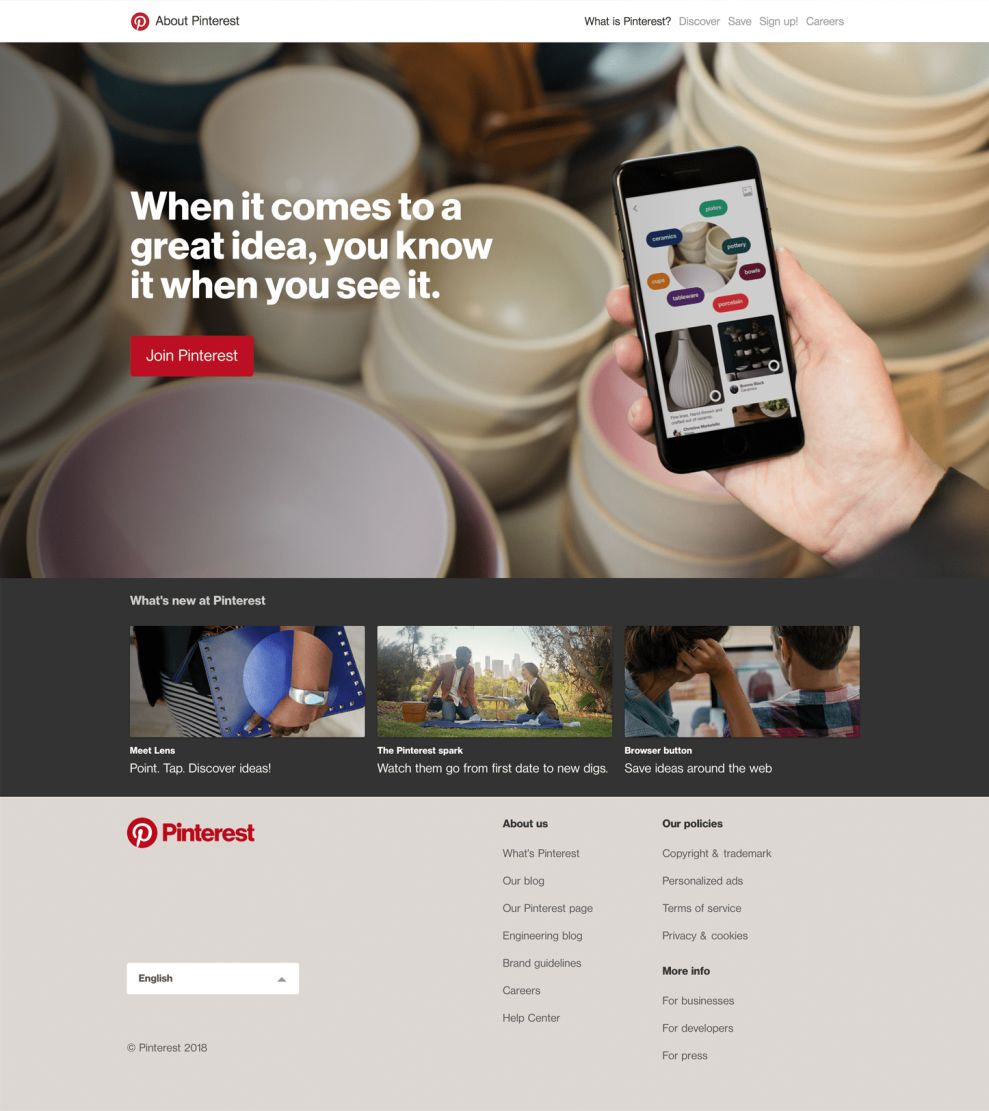- Home
- Best Designs
- Best Website Designs
- 404
- About Page
- Black and White
- Blog
- Check Out Page
- Clean / Minimal
- Colorful
- Corporate
- Footer
- Form
- Fullscreen
- Horizontal Layout
- Illustrated
- Images / Gallery
- Landing Page
- Masthead
- Menu
- Microinteractions
- Motion Effects
- Parallax Effects
- Pop Ups
- Portfolio
- Pro-loaders
- Product Listing Page
- Services Page
- Slider / Module
- Sound / Music
- Storytelling
- Typography
- Unusual Layout
- Use of Infographics
- Advertising
- Aerospace
- Agriculture
- Architecture
- Arts & Recreation
- Automotive
- Banking & Finance
- Content & News
- Distribution
- E-Commerce & Retail
- Education
- Engineering
- Entertainment
- Fashion & Beauty
- Food & Beverage
- Government
- Health & Wellness
- Hospitality
- Legal & Insurance
- Luxury
- Manufacturing
- Medical & Pharmacy
- Non-Profit
- Professional Services
- Real Estate
- Sports & Leisure
- Technology
- Travel

In 2010, Paul Sciarra, Evan Sharp, and Ben Silbermann launched a social network where users could share photos, crafts, recipes, and other multimedia. Since Pinterest's inception, over 72 million people have signed up for a Pinterest account. This staggering number forces the company’s creative design team to further develop the website, making it user-friendly for first-time visitors.
Pinterest’s web design incorporates a minimalist concept and relies on visual effects to attract users. The landing page features a faded, full-screen background image that draws attention to the module window in the middle of the screen.
Users can sign up for an account using their email, Facebook, or Google accounts, which enhances the UX and UI interface. Current users can sign into their account using the white call-to-action button in the top right corner.
The bottom of the page features a translucent horizontal banner that is visible yet subtle. Each title gives users an opportunity to explore the company’s website prior to signing up for an account.

The About page is an example of Pinterest’s “seeing is believing” ideology. It offers little to no text about the social media site, instead using high-resolution images to capture the audience. It incorporates a four-box layout that blends with the dark gray background.
The color scheme of the page and images pulls together, drawing attention to the red call-to-action underneath the tagline.

Pinterest’s Blog page offers users an opportunity to learn about the social media site, current news and events, and the benefits of having an account. It incorporates a reversed fixed sidebar format, with a vertical menu on the right side of the page.
Each post uses Pinterest’s popular “pin” interface, which is an opportunity for new users to familiarize themselves with the format of the page. The white text boxes work well with the light gray background and bold typography.
Pinterest’s web design does two things. First, it keeps things simple and doesn’t overwhelm users with excess or fluffy content. Second, it uses every page as an opportunity for first-time visitors to sign up for an account. This is approach is a great play on B2C and B2B marketing strategy, which is important to the website’s exponential growth.
Pinterest is a great website design in the Arts & Recreation industry.













